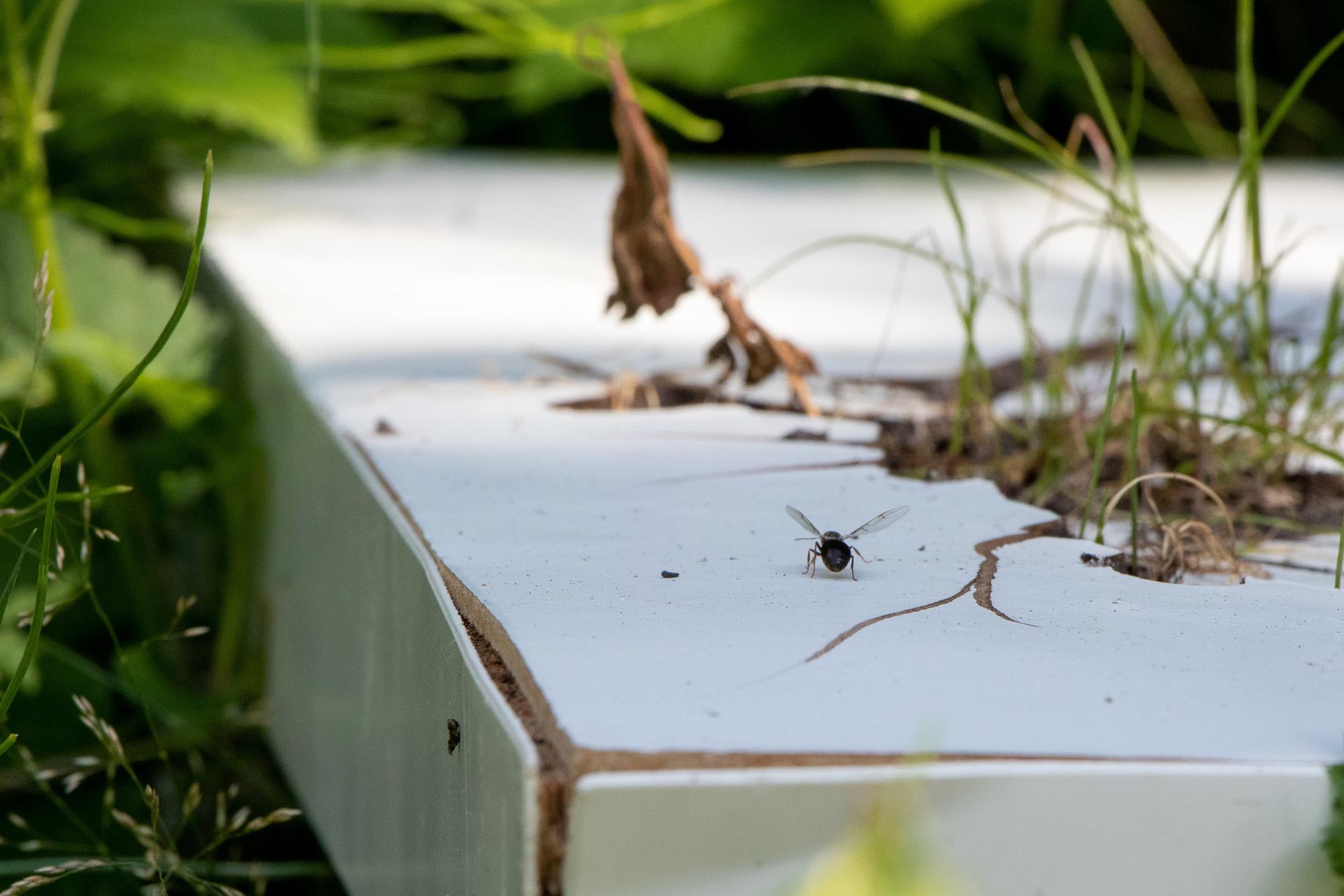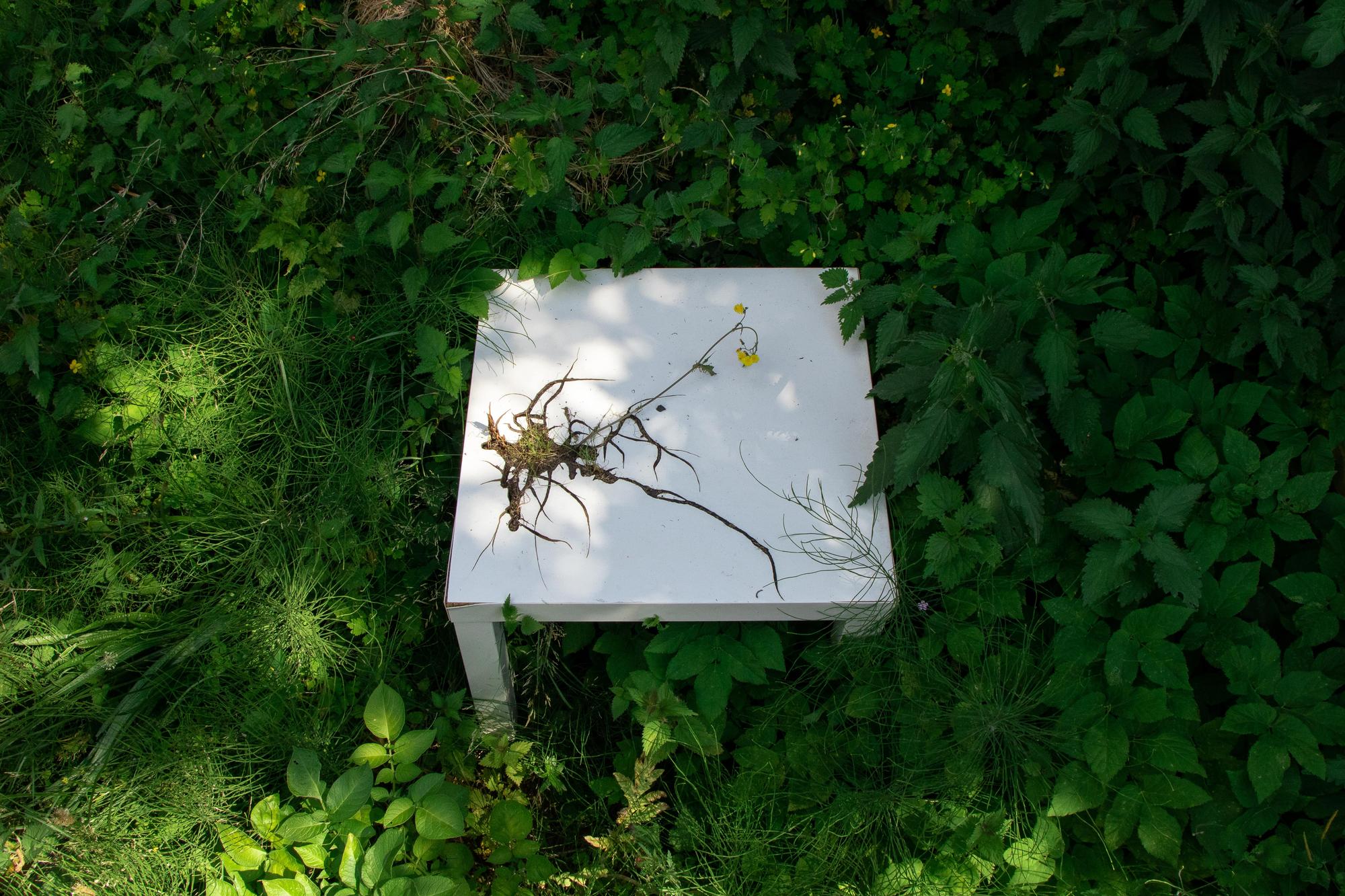Interior Landscape - Life within the cracks of the anthropocene explores the evolving relationship between contemporary design and the ecological world. The project underscores how contemporary design ideologies of cleanliness and purity, heavily influenced the societal exclusion of more-than-human life forms within the built environment, perpetuating a division between the city (for humans) and the wilderness (for everything else).
It is only by looking closer at the cracks of this modern aesthetic where one can see a landscape full of life sprouting from cracks within concrete or weaving silken threads between chair legs, showing us that we are never home alone.
The culmination of this research led to an experimental investigation exposing some of the most popular laminated IKEA furniture peices to outdoor elements over a four month duration. During that time one could observe the symbiotic relationships that formed between the furniture and various more-than-human species as the as the laminates curled and recoiled away from itself, exposing the reinforced cardboard beneath. This study revealed a remarkable convergence of life as ants, bees, local mosses, and weeds inhabited and integrated with the furniture, highlighting the resilience of ecology within anthropic biasis. The project challenges the sterile confines of the modernist aesthetic by including the more-than-humans who live within the cracks of the built environment into the design process – not seeing them as pests but as partners of multi-species world building.
The culmination of this research led to an experimental investigation exposing some of the most popular laminated IKEA furniture peices to outdoor elements over a four month duration. During that time one could observe the symbiotic relationships that formed between the furniture and various more-than-human species as the as the laminates curled and recoiled away from itself, exposing the reinforced cardboard beneath. This study revealed a remarkable convergence of life as ants, bees, local mosses, and weeds inhabited and integrated with the furniture, highlighting the resilience of ecology within anthropic biasis. The project challenges the sterile confines of the modernist aesthetic by including the more-than-humans who live within the cracks of the built environment into the design process – not seeing them as pests but as partners of multi-species world building.
Research contributors
Rebecca Lewin
Rob Dunn
Julia Rijssenbeek
Angelo Renna
Meredith Root-Bernstein
References
1) Encyclopedia of the World’s Biomes Michael Goldstein, Dominick DellaSala - Published June 2020
1) When the Things We Study Respond to Each Other: Tools for Unpacking “the Material” Anna Tsing - Published May 2019
2) Evolution of the indoor biome - NESCent Working Group on the Evolutionary Biology of the Built Environment - Published April 2015
3) biodiversity is messy: a plea for wilder cities - Marco Roos - Published October 2021.





